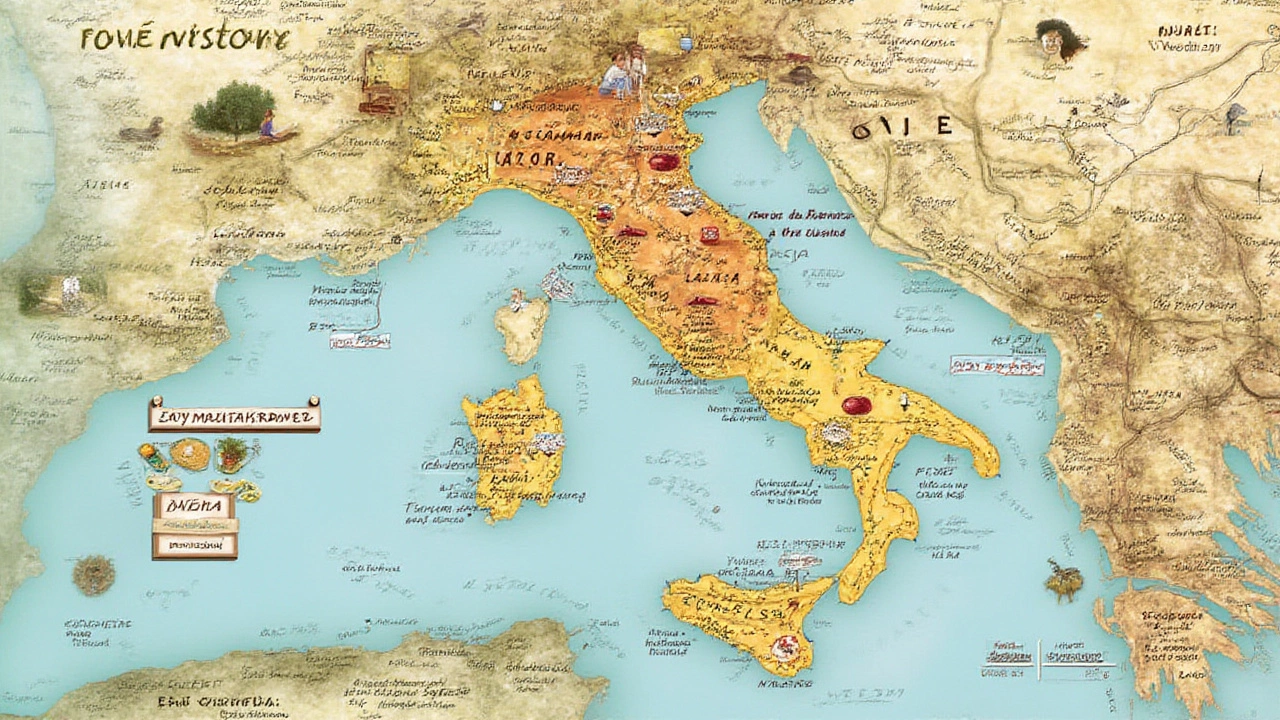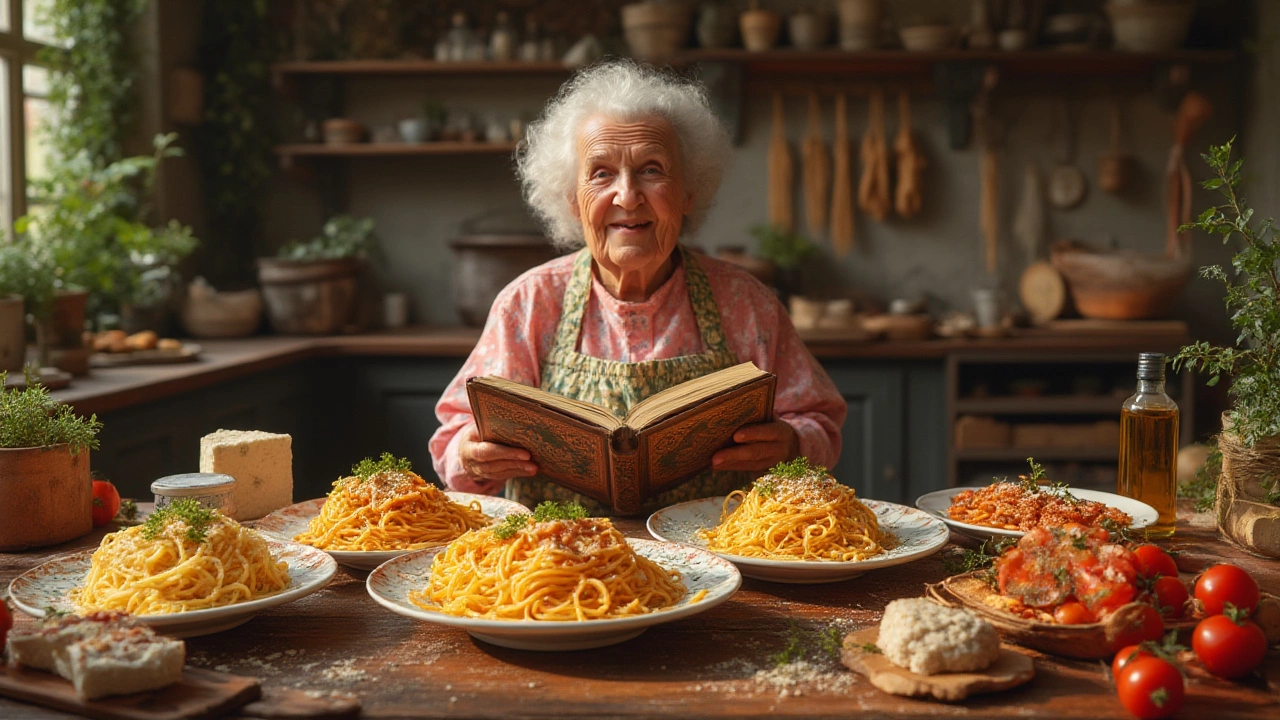Ever wonder why countless Italian restaurants obsess over four particular pasta dishes? These recipes aren’t just favorites; they’re Italian culinary icons that have influenced kitchens and home cooks worldwide. There’s something almost rebellious about the simplicity of these classics—they look basic on paper, but mastering them is one of the most rewarding skills any food lover can have. It comes down to technique, great ingredients, and the confidence to let a few flavors shine. Ask any chef worth their salt and they’ll tell you: these four dishes are the gold standard.
The Origin and Legend of Italy’s Pasta Big Four
Rome didn’t invent all Italian pasta, but it owns the spotlight thanks to four absolute powerhouses: Carbonara, Cacio e Pepe, Amatriciana, and Gricia. These recipes aren’t just delicious—they’re rooted in history and tell stories of resourcefulness. The earliest versions sprung up among shepherds in the Lazio region, using staple ingredients that traveled well and packed serious flavor. Back before refrigeration, cheese, cured pork, black pepper, and dried pasta traveled in saddle bags across rocky countryside. Talk about survival food with serious attitude.
Carbonara, with its dreamy combo of eggs, cheese, and crispy pork, probably didn’t get its name from coal miners ('carbonari') alone—it’s more likely a low-key salute to the dish’s blunt, smoky flavors. Cacio e Pepe, meaning cheese and pepper, proves genius doesn’t need frills. Gricia, the forerunner to Amatriciana, slipped in tomatoes after the ingredient was introduced from the Americas—but it was already legendary before that final twist. People in Amatrice, the town giving its name to Amatriciana, host a festival every August just to celebrate their dish. These aren’t just dinners—they’re living history on a plate.
The pasta they use varies: tonnarelli, bucatini, and rigatoni are common. Regional pride means fierce debate over the "right" pasta shape, but that’s half the fun. Romans say if you can perfect these four, you’re not just making dinner—you’re connecting with centuries of Italian passion and pride.
Making Carbonara: Creamy, Rich, and Never With Cream
So many restaurants wreck carbonara by dumping actual cream in the sauce, but that’s just not how it’s done in Italy. Real carbonara is all about the delicate balance: guanciale (cured pork cheek), Pecorino Romano, eggs, and black pepper. Notice something missing? Cream, milk, or garlic—nowhere to be found. Italians cringe when they see those additions.
What really matters is technique. You cook the guanciale until bronzed and crisp, then toss in drained hot pasta. That heat is crucial; it gently cooks the egg yolks and cheese, transforming them into a silky sauce instead of scrambled eggs. The trick is to whisk the egg and cheese mixture off the heat, letting the warmth of the pasta do the heavy lifting. Too hot, and you ruin the sauce. Too cool, and the texture falls flat.
If guanciale is hard to find, pancetta works in a pinch, but bacon’s smoky flavor can overpower things. For cheese, stick with Pecorino Romano for an authentic, sharp, and salty kick. And don’t skimp on freshly cracked black pepper—the coarse grind adds flavor and a little texture. Italians often use long pastas like spaghetti or rigatoni. Don’t forget the pasta water; its starchiness helps the sauce glide across every bite. A quick note for purists: onions or garlic are never part of the classic recipe. The beauty of carbonara comes from its simplicity and perfect execution. Once you nail it at home, you’ll never want to order it out again.
Cacio e Pepe: Minimalism That Packs a Punch
If there’s a pasta dish that screams less is more, it’s cacio e pepe. We’re talking just three ingredients: pasta, grated Pecorino Romano, and copious black pepper. No butter, no cream, not even olive oil. Getting this dish right means knowing how to toss your pasta and when to add starchy water. There’s no hiding behind lots of extras—just bold flavors.
Start by vigorously boiling pasta, usually tonnarelli or spaghetti. That water is gold: scoop some out before draining. In Rome, skilled chefs create an emulsion by shaking pecorino and plenty of pepper into the hot noodles, along with a bit of the reserved pasta water, stirring until everything comes together in a beautiful, clinging sauce. The cheese should never separate or clump; serious whisking is key. Some people grate extra cheese and pepper on top for a punch in the face of flavor.
Getting the parmesan shavings to melt takes a little patience and just the right touch with temperature. The dish’s simplicity makes technique everything. For a practical tip, use freshly grated cheese—pre-shredded stuff won’t melt properly. The legend goes that cacio e pepe kept Roman shepherds fueled in the rugged hills, their pockets filled with cheese wedges and peppercorns, ready to whip up dinner with whatever pasta they had. Fast forward to today, and you’ve got an enduring symbol of simple Roman cooking. Once you’ve tried the real thing, pasta night will never be the same again.

Amatriciana: The Tomato Twist That Made History
The moment tomatoes entered Italian kitchens, everything changed. Enter Amatriciana—the only member of the "big four" with tomatoes in the starring role. But it’s not just any tomato sauce; Amatriciana combines guanciale, Pecorino Romano, and tomato for a bold, tangy kick. According to tradition, it started in Amatrice, a small mountain town, where tough winters led locals to embrace pork fat and preserved cheese. Tomatoes, a New World ingredient, arrived much later, transforming the local dish forever.
Authentic Amatriciana should always start by crisping guanciale in a pan, letting the pork fat flavor every bit of the sauce. Some folks add a splash of dry white wine to deglaze the pan, but purists just go straight in with canned San Marzano tomatoes. The sauce simmers to rich thickness before being tossed with pasta—spaghetti or, even better, bucatini. That hollow bucatini slurps up the sauce and lets every mouthful burst with flavor. Remember to finish with Pecorino Romano and a little black pepper on top.
A lot of Italians bristle at onions or garlic in this one. Some recipes include chili flakes for heat, but that’s optional. Strip it back to basics and you’ll see why this dish has outlasted every food trend. You can actually walk into Amatrice and see old plaques listing the “official” recipe—people take this stuff seriously. One quick fact: Amatriciana is so important to Romans that there’s been fierce debate about the “right” kind of pasta for it. If you want to taste culinary history, this is the one to try.
Gricia: The Unsung Hero With a Cult Following
If you’ve never tried Gricia, you’re missing out. It’s the true origin story behind both carbonara and Amatriciana—think of it as the missing link. There’s no sauce, no eggs, no tomato, just guanciale, Pecorino Romano, and a good grind of black pepper, all tossed with pasta (often rigatoni). Its simplicity is what makes it so remarkable—you taste every ingredient, every technique. It started as "white amatriciana" before tomatoes reached Italy, so the flavors are ancient and direct.
Gricia’s vibe is all about texture; the rendered guanciale wraps the pasta in silky fat, while salty cheese clings to every bite. What sets it apart is the perfect balance between chewy, cheesy, and savory. Some passionate home cooks in Rome claim that, when made perfectly, Gricia rivals even the flashiest modern pasta dishes. Getting the pork crisped just right is the secret: too little, and you miss the crunch; too much, and the fat all disappears. Save a little reserved pasta water to toss everything together at the end—it helps the cheese melt while the pork stays put.
This one is quietly gaining fans even outside Italy. It checks all the boxes for today’s home cooks: minimal ingredients, big flavors, gluten-friendly if you pick the right noodles, and quick to make. If you want to explore Roman cooking, start with Gricia—you’ll feel like you’re eating a page of culinary history.
Secrets to Nailing Roman Pasta at Home: Real Tips From Italian Kitchens
The backbone of these four pasta legends is great-quality ingredients. If you want to make them taste like the streets of Rome, don’t cut corners. Guanciale is king—look for it in good Italian delis, but if you can’t, go with pancetta. For cheese, only Pecorino Romano gives the right salty, punchy vibe. Don’t even think about using a shaker of pre-ground stuff. Freshly ground black pepper is a must; peppercorns lose their oils fast.
Get into the habit of saving pasta water during cooking. That stuff is liquid gold, loaded with starch that binds the sauces together and makes everything silky. Romans use it constantly, especially when working with cheese-based sauces like carbonara and cacio e pepe. And always remove the pan from direct heat when adding the egg and cheese to carbonara, or the cheese in cacio e pepe—it stops things from sticking and creates that signature sauce.
Check out this quick ingredients comparison for all four dishes. Notice the simple upgrades that make all the difference.
| Pasta Dish | Signature Ingredients | Average Prep Time (mins) | Calories / Serving |
|---|---|---|---|
| Carbonara | Guanciale, eggs, Pecorino Romano, black pepper, pasta | 25 | 570 |
| Cacio e Pepe | Pecorino Romano, black pepper, pasta | 18 | 520 |
| Amatriciana | Guanciale, Pecorino Romano, tomatoes, black pepper, pasta | 35 | 640 |
| Gricia | Guanciale, Pecorino Romano, black pepper, pasta | 22 | 560 |
Try adding a "Roman night" to your menu and let these dishes take center stage. Don’t get stressed about perfection: the real joy is hitting the right textures, savoring bold, real flavors, and feeling that little spark of Roman kitchen magic. When it comes to *main pasta dishes*, these four hold their ground against any fancy restaurant showpiece. If you haven’t cooked them yet, you’re missing out on the thrill of creating Italy’s best at home, just the way they’ve done it for generations.

